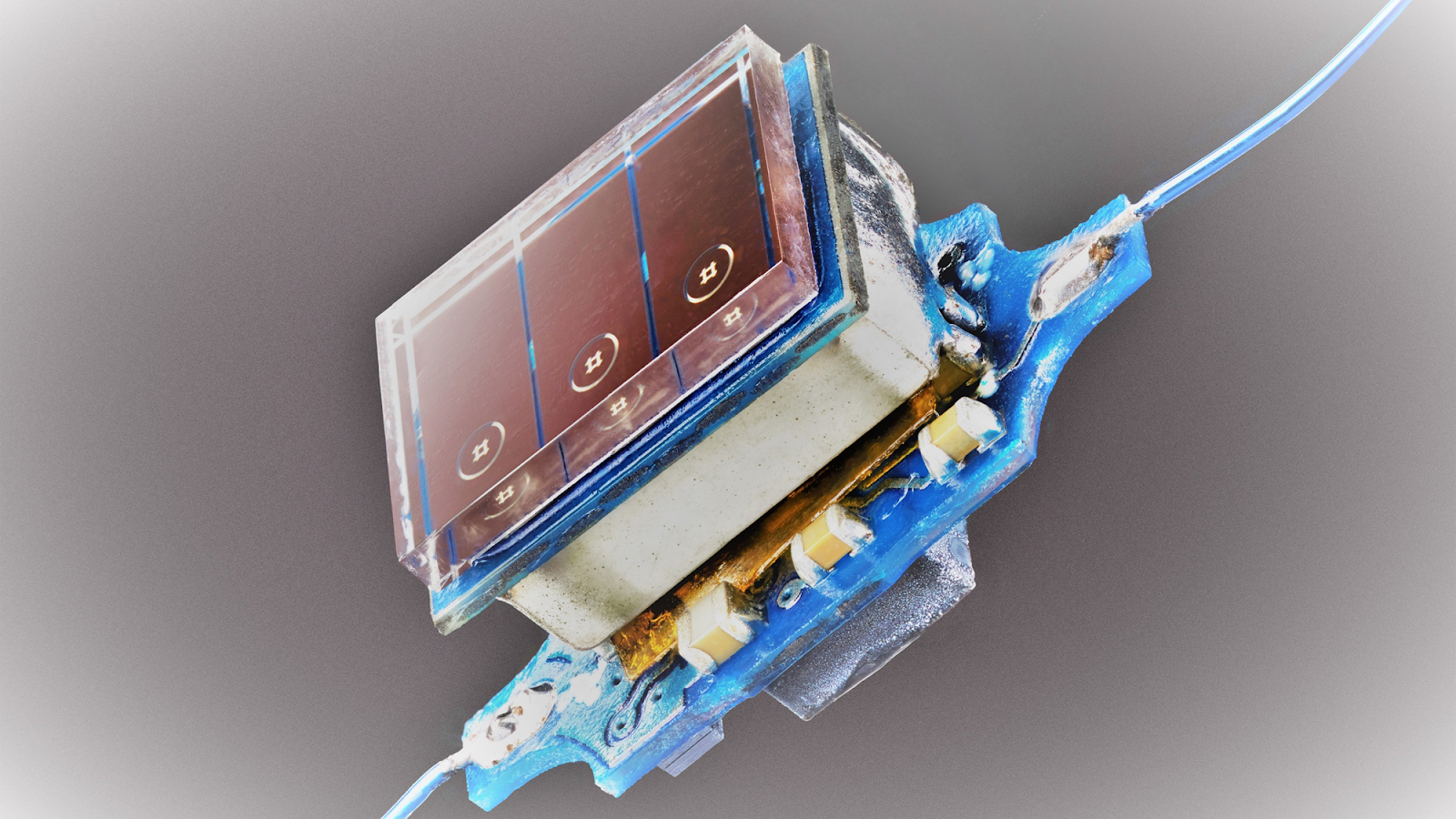WP5: SoCs for Autonomous IoT Devices
WP5 addresses key circuit developments that are instrumental for Internet of Things (IoT) wireless sensor nodes that are sustainable, miniature, and energy-autonomous. Solutions based on energy harvesting and power management will be the main focus.

This work package addresses key specific circuit developments that are instrumental to empower the ubiquitous deployment of sustainable, miniature, energy-autonomous, Internet of Things (IoT) wireless sensor nodes (WSN) that hold the promises of the next data revolution, currently hindered by excessive power dissipation and limited energy density. Firstly, advances in energy harvesting and power management are necessary to eliminate: (i) batteries, reducing environmental waste and costly maintenance due to their frequent replacement; (ii) voltage headroom imposed by PVT variations, and (iii) energy leakage by aggressive duty cycling to lower power dissipation. Secondly, improved synchronization with accurate timing permits among others just-in-time rendezvous minimizing dissipation overheads. Thirdly, neither 6G nor SATCOM radios developed in WP3, 4, neither current LPWAN (LORA, NB-IOT) nor PAN (WiFi, BLE) solutions satisfy extreme-edge to cloud connectivity scenarios due to excessive power dissipation. Dedicated ULP radios based on novel approaches preserving state-of-the-art linearity and sensitivity have thus to be engineered. Data acquisition, conversion, processing and reduction, handling, and encryption will mostly be addressed in WPs 8, 7, 6, and 2 respectively. Such functions will be integrated into SoCs or SiPs with missing dedicated AFEs in this WP, targeting system level demonstrators exemplifying the synergies between the different SwissChips WPs. Paving the way towards energy autonomous, distributed, smart sensing systems, SwissChips, and WP5 will reinforce the competitiveness of Europe in the sensing/data area in line with the GDPR and contribute to the development of a more sustainable society.
WP5 Lead: Dr. David Ruffieux, CSEM
David Ruffieux is leading CSEM’s focus area research program ASICs for the Edge which targets the development of smart wireless sensor nodes operating at the edge. He is interested in timing solutions (32kHz RTCs up to atomic clocks), wireless communication and ranging (BLE, UWB), power management and energy harvesting. He is also an EPFL lecturer.
Contact: , external page David Ruffieux — People - EPFL
WP5 Co-lead: Prof. Taekwang Jang, ETH Zurich
Taekwang Jang leads the Energy Efficient Circuits and Intelligent Systems at ETH Zurich. The group focuses on analog and mixed-signal circuits and systems. Sensor interfaces, energy harvesters, power converters, communication transceivers, frequency synthesizers, and data converters are his primary interests.
Contact: Taekwang Jang
WP5 Collaborators, Students & Researchers
- external page Juan Sapriza, PhD student, EPFL, Supervisor: Prof. David Atienza
- external page Dr. Davide Schiavone, Postdoc, EPFL, Supervisor: Prof. David Atienza
- external page Dr. Cong Ding, Postdoc, EPFL, Supervisor: Prof. Mahsa Shoaran
- Dr. Kyeongwon Jeong, Postdoc, ETH, Supervisor: Prof. Taekwang Jang
- Seungki Hong, PhD student, ETH, Supervisor: Prof. Taekwang Jang
- Suyang Song, PhD student, ETH, Supervisor: Prof. Taekwang Jang
- Enci Zhang, PhD student, ETH, Supervisor: Prof. Taekwang Jang
- Mohsen Ghorbanpoor, PhD student, ETH/CSEM, Supervisor: Prof. Hua Wang
- external page Leticia De Sousa, PhD student, EPFL/CSEM, Supervisors: Prof. Guillermo Villanueva, Dr. David Ruffieux
- external page Misha Abipour, PhD student, EPFL/CSEM, Supervisor: Prof. Hua Wang, Dr. David Ruffieux
- external page Osman Kiziltug, PhD student, CSEM, Supervisor: Dr. David Ruffieux
- external page Hasti Fattahi, PhD student, CSEM, Supervisor: Dr. Stéphane Emery